1 of 24
Download to read offline
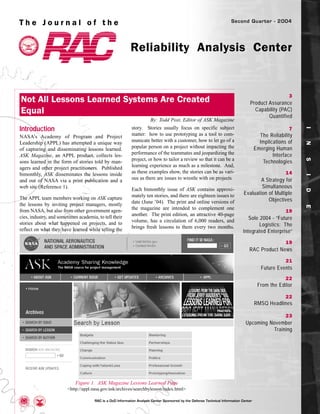

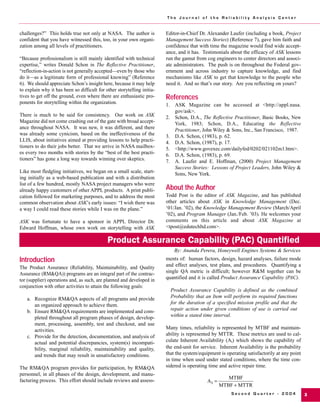

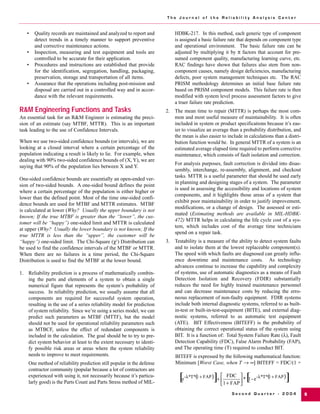
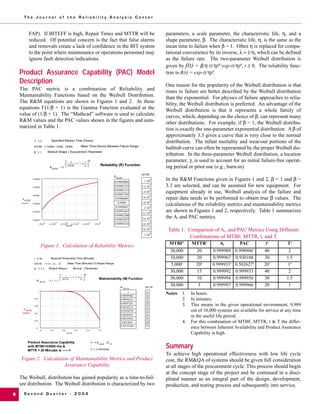
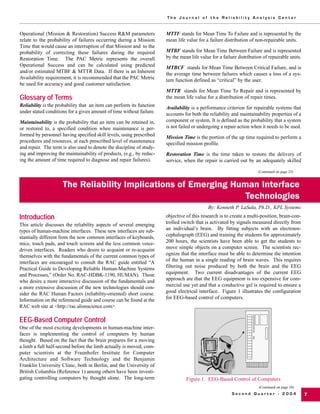


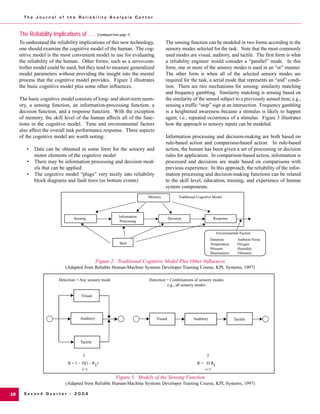
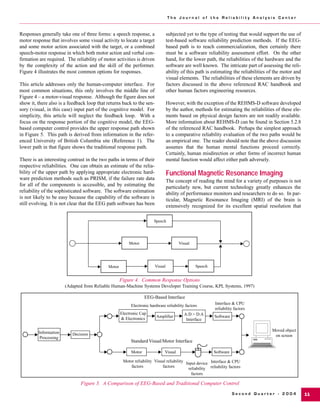
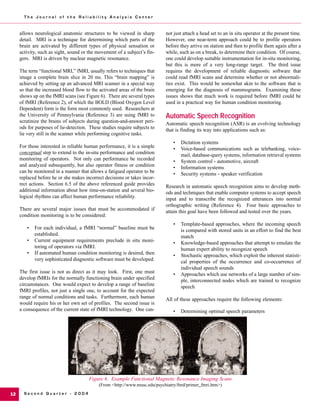
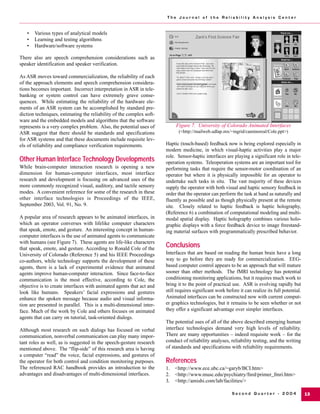



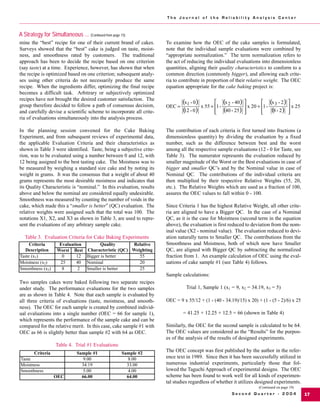
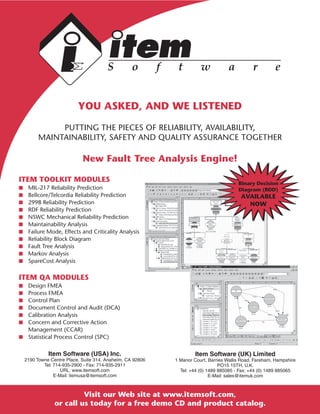
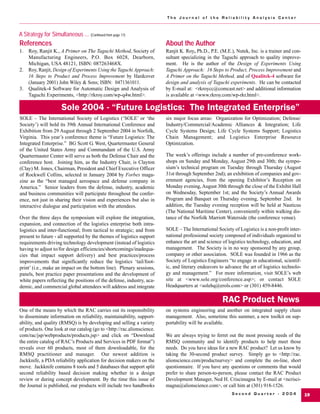

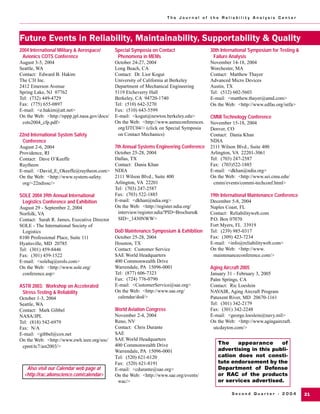

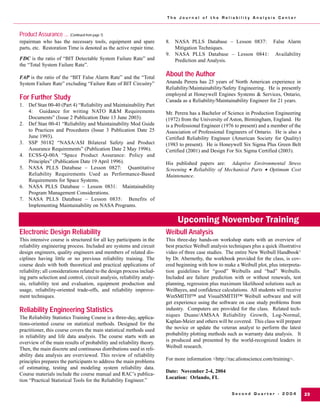
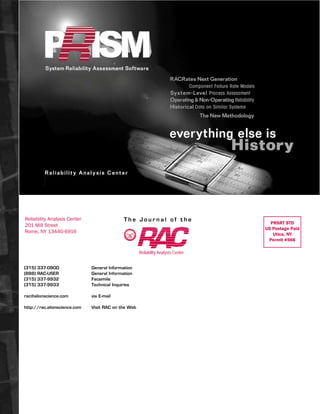
Ad
Recommended
ESS and HASS: Concerns with the Practices and Standards
ESS and HASS: Concerns with the Practices and StandardsHilaire (Ananda) Perera P.Eng.
╠²
The document provides an overview of Environmental Stress Screening (ESS) and Highly Accelerated Stress Screening (HASS), discussing their use in electronic product development to detect and minimize defects. It outlines the standards, methodologies, and techniques for implementing ESS and HASS, followed by a comparison of various industry standards. The webinar concludes with suggestions for improving testing methods based on current technological developments.CALCE Test Services and Failure Analysis (TSFA) Laboratory
CALCE Test Services and Failure Analysis (TSFA) LaboratoryHilaire (Ananda) Perera P.Eng.
╠²
The CALCE Test Services and Failure Analysis (TSFA) Laboratory is a leading facility offering extensive testing and analysis services for electronic products, including design reviews, lifetime assessments, and reliability audits. Recent upgrades include advanced imaging systems and equipment to assess material properties, enhancing its service capabilities. The lab aims to provide cost-effective and efficient assistance to clients while promoting product quality and reliability.IEEE 1633 Recommended Practice on Software Reliability
IEEE 1633 Recommended Practice on Software ReliabilityHilaire (Ananda) Perera P.Eng.
╠²
The document outlines the IEEE 1633 recommended practices for software reliability, emphasizing actionable models and analyses that can be employed throughout the software development lifecycle. It addresses the historical context, practical applications, and presents structured guidance for reliability engineers, software developers, and managers to improve software reliability. The document has been approved for use across various industries and aims to enhance the implementation of software reliability methodologies.BIOMASS Based Power ( Electrical & Thermal )
BIOMASS Based Power ( Electrical & Thermal )Hilaire (Ananda) Perera P.Eng.
╠²
Biomass power, derived from organic materials, offers a renewable and carbon-neutral energy source for electricity and thermal power generation. While biomass can reliably provide electricity and is expected to increase its market share, it faces challenges such as inefficiency, collection costs, and environmental concerns regarding resource competition and emissions. Technologies like direct combustion, anaerobic digestion, and combined heat and power systems illustrate the diverse methods of biomass utilization, though achieving cost-effective and sustainable feedstock supply chains remains a critical hurdle.Reliability Growth Testing (RGT) Plan
Reliability Growth Testing (RGT) Plan Hilaire (Ananda) Perera P.Eng.
╠²
The Reliability Growth Testing (RGT) plan outlines a systematic approach for testing and improving the reliability of end units through planned testing, failure analysis, and corrective actions. It employs the Duane model for assessing mean time between failure (MTBF) growth, aiming to identify and eliminate design deficiencies while managing resources effectively. The plan emphasizes the importance of early detection of failures and robust reporting systems to facilitate continuous reliability improvement.Statistical Confidence Level
Statistical Confidence LevelHilaire (Ananda) Perera P.Eng.
╠²
The document discusses statistical confidence levels and intervals, emphasizing their importance in estimating population parameters with uncertainty. It details methods for calculating confidence limits, particularly in the context of reliability tests, and explains how to determine mean time between failures (MTBF) and reliability metrics based on observed failures. The content also includes formulas for confidence limits and practical examples for applying these concepts.Reliability if "m" of "n" Must be Working
Reliability if "m" of "n" Must be WorkingHilaire (Ananda) Perera P.Eng.
╠²
The document discusses reliability calculations using different values of m (minimum components needed) and n (total components available) for a system. It provides failure probabilities and mean time between failures (MTBF) for various scenarios: all four components, three out of four, two out of four, and one out of four. The calculations demonstrate that as the number of required components decreases, the probability of system failure also decreases while MTBF increases.Outgoing Reliability Assurance of 'End-Units'
Outgoing Reliability Assurance of 'End-Units'Hilaire (Ananda) Perera P.Eng.
╠²
The document discusses environmental stress screening (ESS) processes used to test electronic products and remove latent defects. It notes that while ESS is commonly used, failure rate analysis is not always performed to evaluate screening effectiveness. The document recommends analyzing failure rate distributions over time using the Chance Defective Exponential model to determine optimal ESS screening times and ensure high outgoing quality. Adaptive ESS processes that adjust screening parameters based on results can further reduce defects.Transient Suppressors
Transient SuppressorsHilaire (Ananda) Perera P.Eng.
╠²
The document discusses the nature and sources of transients in electrical systems, emphasizing their detrimental effects on equipment, particularly in shipboard and aircraft power systems. It details various types of power systems and the types of voltage transients they experience, alongside common sources like lightning and load switching. Additionally, it illustrates methods for mitigating these transients, including the use of capacitive filters and transient suppressors, with a focus on bipolar transient voltage suppressors.Reliability Prediction Procedure for Mechanical Components
Reliability Prediction Procedure for Mechanical ComponentsHilaire (Ananda) Perera P.Eng.
╠²
The document outlines a methodology for predicting the reliability of mechanical components, specifically for the JSF PTMS controller, using a stress/strength interference approach. It details sequential tasks necessary for assessing failure modes, determining design variables, and calculating the overall reliability based on statistical distributions. An example illustrates the application of the methodology to assess the reliability of a liquid carry-over sensor in a space station context.Software Reliability
Software ReliabilityHilaire (Ananda) Perera P.Eng.
╠²
The document discusses the long-term quality assurance of hardware and software, emphasizing their differing life cycles and associated failure rates. It highlights the challenges of software upgrades potentially introducing new defects, the estimation of inherent faults through fault rate plots, and various software reliability models developed since the 1970s. The summary includes a detailed examination of prediction and estimation models, focusing on Musa's execution time model for predicting initial failure rates of software systems.Virtual Qualification
Virtual QualificationHilaire (Ananda) Perera P.Eng.
╠²
The document discusses the concept of virtual qualification for reliability assessment in materials and components, emphasizing its cost-effectiveness and efficiency compared to traditional methods. It involves simulating stress analysis and failure mechanisms to predict time-to-failure and optimize design criteria. Accurate inputs and valid failure mechanisms are crucial for reliable results in this process.Availability
AvailabilityHilaire (Ananda) Perera P.Eng.
╠²
The document discusses the concept of availability in repairable systems, defining it as the probability that a system is operational at a given time, incorporating both reliability and maintainability. It outlines various classifications of availability, including instantaneous, average uptime, steady state, inherent, achieved, and operational availability, each providing different perspectives on system performance and downtime considerations. An example involving a diesel generator and a wind turbine illustrates the distinctions between operational and inherent availability, emphasizing the importance of context and specific metrics in evaluating system performance.Testability
TestabilityHilaire (Ananda) Perera P.Eng.
╠²
The document discusses the concept of testability in system design, emphasizing its importance in fault detection, isolation, and overall system maintainability and reliability. It outlines various metrics for measuring testability, such as system downtime and false alarm rates, while also addressing challenges like accessibility, visibility, and the use of built-in and automatic test equipment. Additionally, the document highlights the need for effective diagnostics and the potential risks associated with specific test requirements and management practices.Accelerated Stress Testing
Accelerated Stress TestingHilaire (Ananda) Perera P.Eng.
╠²
The document discusses the fundamentals of Accelerated Stress Testing (AST), highlighting its significance in ensuring product reliability amidst evolving manufacturing technologies and customer expectations. It contrasts simulation and stimulation testing methods, emphasizing the need to identify specific failure mechanisms through high-stress conditions to uncover potential defects. The purpose of AST is to enhance product reliability by applying stress to speed up the identification of weaknesses during product design.Early Life Failure Rate Calculation Procedure for Semiconductor Components
Early Life Failure Rate Calculation Procedure for Semiconductor ComponentsHilaire (Ananda) Perera P.Eng.
╠²
The JEDEC Standard JESD74A outlines a procedure for calculating the early life failure rate (ELFR) of semiconductor components using accelerated testing. It includes specifications for test samples, conditions, durations, and methodologies for evaluating failure rates across different mechanisms, contributing to improvements in product reliability during initial customer use. The document serves to facilitate understanding between manufacturers and purchasers and is intended for worldwide application, while emphasizing the adherence to the defined standard requirements.Use of Failure Mechanisms enhance FMEA and FMECA
Use of Failure Mechanisms enhance FMEA and FMECAHilaire (Ananda) Perera P.Eng.
╠²
This document summarizes a paper that proposes a new methodology called Failure Modes, Mechanisms and Effects Analysis (FMMEA) to enhance traditional Failure Modes and Effects Analysis (FMEA). The standard FMEA process does not identify failure mechanisms or models, limiting its usefulness. FMMEA identifies high priority failure mechanisms and models to help control operational stresses and test product reliability. It was applied to an electronic circuit board assembly in an automotive underhood environment. The full paper discusses the limitations of FMEA and how identifying failure mechanisms can help with virtual qualification, root cause analysis, accelerated testing, and remaining life assessment.Basic Design Considerations for Surface Mount Technology
Basic Design Considerations for Surface Mount TechnologyHilaire (Ananda) Perera P.Eng.
╠²
Surface mount technology (SMT) secures electronic components to printed circuit boards through soldering the leads directly to the surface rather than passing them through holes. This places more stress on the solder connections and can lead to higher failure rates compared to through-hole technology. SMT offers advantages like being able to mount components on both sides of boards and in closer proximity. However, special design considerations are needed like matching the coefficient of thermal expansion of components and boards and ensuring the soldering surfaces can withstand the temperatures of the soldering process without damage.Thermal cycling screen development
Thermal cycling screen developmentHilaire (Ananda) Perera P.Eng.
╠²
Thermal cycling screens involve cycling hardware between high and low temperatures to induce failures. Method A for developing a thermal cycling profile uses a thermal survey to tailor cycle characteristics, equipment conditions, and number of cycles to the specific hardware. An ideal thermal survey involves computer modeling, constructing a test facility replica, instrumenting hardware, and performing experimental trials to establish screening parameters that achieve desired hardware temperature histories. Key parameters include temperature extremes and rates of change, dwell times at extremes, and whether hardware is powered during screening.Design For Reliability
Design For ReliabilityHilaire (Ananda) Perera P.Eng.
╠²
The document discusses various techniques for designing products for reliability, including derating components, accelerated life testing, and reliability estimation methods. It describes how reliability modeling should guide the design process from the beginning to design out potential failure mechanisms. The goal is to develop longer-lived products through an iterative approach of testing, analyzing failures, and redesigning to improve reliability. Key aspects of a reliability-focused design process include understanding failure mechanisms, developing reliability databases, and using super-accelerated life testing techniques.Rating & uprating handbook
Rating & uprating handbookHilaire (Ananda) Perera P.Eng.
╠²
This book provides a methodology for engineers to determine if electronic parts can meet performance requirements when used outside of the manufacturer's specified ratings. It aims to give a well-defined, risk-informed process for uprating parts. The book covers determining application environment specifications, avoiding risks of using parts outside ratings, applying an uprating methodology, and mitigating legal risks. It is intended for engineers selecting, qualifying, and managing electronic parts across the supply chain, from product manufacturers to part suppliers.Vibration before thermal cycling in ESS
Vibration before thermal cycling in ESSHilaire (Ananda) Perera P.Eng.
╠²
Environmental stress screening (ESS) is a process that applies environmental stresses like vibration to products to induce latent defects. This helps improve quality and reliability. Vibration and temperature cycling are effective forms of ESS to stimulate flaws like loose connections or cracks. ESS is intended to find flaws, not simulate actual use, so failures during the process are encouraged and their causes must be identified and addressed. Random and quasi-random vibration are commonly used for ESS to induce a variety of motions that can cause failures through mechanisms like loose parts or solder joints. Thermal cycling and vibration work best together in ESS to find defects that one stress alone may not reveal.Mechanical component reliability
Mechanical component reliabilityHilaire (Ananda) Perera P.Eng.
╠²
This document provides methodology for designing reliability into mechanical components. It discusses testing wear-related parts for 2 times their expected cycle life to ensure no failures occur during operational use. It also describes using a probabilistic design method called stress/strength interference to design non-wear parts subjected to reversing loads, selecting a safety margin probability number based on the mean and standard deviation of material strength and stress functions. All components should be designed to have a reliability better than a target for the total operational use time.Maintainability engineering
Maintainability engineeringHilaire (Ananda) Perera P.Eng.
╠²
The document discusses maintainability analysis, which aims to establish design criteria that provides desired system features and allows design decisions through evaluation of alternatives. It outlines the procedure for maintainability analysis, which integrates contractor studies and engineering reports into a detailed design approach. Key aspects of the analysis include determining mean time to repair, maintenance man-hours, fault detection rates, and required test capabilities. Trade-off studies are conducted to provide an economical yet maintainable design that meets system requirements.Highly accelerated stress screening
Highly accelerated stress screeningHilaire (Ananda) Perera P.Eng.
╠²
This document discusses Highly Accelerated Stress Screening (HASS), which is used to identify new failure modes that may be introduced during production or sustaining processes. HASS involves subjecting products to stresses beyond operational limits in a precipitation screen to induce failures, followed by a detection screen near operational limits while functionally testing. The stress levels are based on limits found during prior Highly Accelerated Life Testing (HALT), with vibration reduced 50% and thermal excursions reduced 20% as starting points. HASS uses similar equipment to HALT but with fixtures that can accommodate production quantities undergoing quick, simultaneous vibration and temperature stresses.Prognostic health management
Prognostic health managementHilaire (Ananda) Perera P.Eng.
╠²
Prognostic Health Management (PHM) uses health monitoring and prognostics to predict product failures by assessing degradation from normal operating conditions. Traditional reliability predictions are inaccurate, while PHM is more suitable as it considers actual usage. Research is being conducted to improve PHM models, sensors, communication and decision making to make reliability predictions more realistic. PHM is expected to become a cost-effective solution for predicting electronics reliability due to increasing electronics usage and demand for more reliable products.Cost effectiveness for maintainable products
Cost effectiveness for maintainable productsHilaire (Ananda) Perera P.Eng.
╠²
The document discusses cost effectiveness analysis for maintainable products. It defines cost effectiveness as the ratio of successful missions to life cycle cost. It describes key parameters related to cost effectiveness including reliability, operational availability, and life cycle cost. Reliability is modeled using the Weibull distribution. Operational availability accounts for all downtime including maintenance. Life cycle cost includes development, investment, and operating costs. The cost effectiveness equation can be used to compare past, present, and future systems to understand trade-offs between number of successful missions and total cost.Filipino 9 Maikling Kwento Ang Ama Panitikang Asiyano
Filipino 9 Maikling Kwento Ang Ama Panitikang Asiyanosumadsadjelly121997
╠²
Filipino 9 Maikling Kwento Ang Ama Panitikang AsiyanoTHE PSYCHOANALYTIC OF THE BLACK CAT BY EDGAR ALLAN POE (1).pdf
THE PSYCHOANALYTIC OF THE BLACK CAT BY EDGAR ALLAN POE (1).pdfnabilahk908
╠²
Psychoanalytic Analysis of The Black Cat by Edgar Allan Poe explores the deep psychological dimensions of the narratorŌĆÖs disturbed mind through the lens of Sigmund FreudŌĆÖs psychoanalytic theory. According to Freud (1923), the human psyche is structured into three components: the Id, which contains primitive and unconscious desires; the Ego, which operates on the reality principle and mediates between the Id and the external world; and the Superego, which reflects internalized moral standards.
In this story, Poe presents a narrator who experiences a psychological breakdown triggered by repressed guilt, aggression, and internal conflict. This analysis focuses not only on the gothic horror elements of the narrative but also on the narratorŌĆÖs mental instability and emotional repression, demonstrating how the imbalance of these three psychic forces contributes to his downfall.More Related Content
More from Hilaire (Ananda) Perera P.Eng. (20)
Transient Suppressors
Transient SuppressorsHilaire (Ananda) Perera P.Eng.
╠²
The document discusses the nature and sources of transients in electrical systems, emphasizing their detrimental effects on equipment, particularly in shipboard and aircraft power systems. It details various types of power systems and the types of voltage transients they experience, alongside common sources like lightning and load switching. Additionally, it illustrates methods for mitigating these transients, including the use of capacitive filters and transient suppressors, with a focus on bipolar transient voltage suppressors.Reliability Prediction Procedure for Mechanical Components
Reliability Prediction Procedure for Mechanical ComponentsHilaire (Ananda) Perera P.Eng.
╠²
The document outlines a methodology for predicting the reliability of mechanical components, specifically for the JSF PTMS controller, using a stress/strength interference approach. It details sequential tasks necessary for assessing failure modes, determining design variables, and calculating the overall reliability based on statistical distributions. An example illustrates the application of the methodology to assess the reliability of a liquid carry-over sensor in a space station context.Software Reliability
Software ReliabilityHilaire (Ananda) Perera P.Eng.
╠²
The document discusses the long-term quality assurance of hardware and software, emphasizing their differing life cycles and associated failure rates. It highlights the challenges of software upgrades potentially introducing new defects, the estimation of inherent faults through fault rate plots, and various software reliability models developed since the 1970s. The summary includes a detailed examination of prediction and estimation models, focusing on Musa's execution time model for predicting initial failure rates of software systems.Virtual Qualification
Virtual QualificationHilaire (Ananda) Perera P.Eng.
╠²
The document discusses the concept of virtual qualification for reliability assessment in materials and components, emphasizing its cost-effectiveness and efficiency compared to traditional methods. It involves simulating stress analysis and failure mechanisms to predict time-to-failure and optimize design criteria. Accurate inputs and valid failure mechanisms are crucial for reliable results in this process.Availability
AvailabilityHilaire (Ananda) Perera P.Eng.
╠²
The document discusses the concept of availability in repairable systems, defining it as the probability that a system is operational at a given time, incorporating both reliability and maintainability. It outlines various classifications of availability, including instantaneous, average uptime, steady state, inherent, achieved, and operational availability, each providing different perspectives on system performance and downtime considerations. An example involving a diesel generator and a wind turbine illustrates the distinctions between operational and inherent availability, emphasizing the importance of context and specific metrics in evaluating system performance.Testability
TestabilityHilaire (Ananda) Perera P.Eng.
╠²
The document discusses the concept of testability in system design, emphasizing its importance in fault detection, isolation, and overall system maintainability and reliability. It outlines various metrics for measuring testability, such as system downtime and false alarm rates, while also addressing challenges like accessibility, visibility, and the use of built-in and automatic test equipment. Additionally, the document highlights the need for effective diagnostics and the potential risks associated with specific test requirements and management practices.Accelerated Stress Testing
Accelerated Stress TestingHilaire (Ananda) Perera P.Eng.
╠²
The document discusses the fundamentals of Accelerated Stress Testing (AST), highlighting its significance in ensuring product reliability amidst evolving manufacturing technologies and customer expectations. It contrasts simulation and stimulation testing methods, emphasizing the need to identify specific failure mechanisms through high-stress conditions to uncover potential defects. The purpose of AST is to enhance product reliability by applying stress to speed up the identification of weaknesses during product design.Early Life Failure Rate Calculation Procedure for Semiconductor Components
Early Life Failure Rate Calculation Procedure for Semiconductor ComponentsHilaire (Ananda) Perera P.Eng.
╠²
The JEDEC Standard JESD74A outlines a procedure for calculating the early life failure rate (ELFR) of semiconductor components using accelerated testing. It includes specifications for test samples, conditions, durations, and methodologies for evaluating failure rates across different mechanisms, contributing to improvements in product reliability during initial customer use. The document serves to facilitate understanding between manufacturers and purchasers and is intended for worldwide application, while emphasizing the adherence to the defined standard requirements.Use of Failure Mechanisms enhance FMEA and FMECA
Use of Failure Mechanisms enhance FMEA and FMECAHilaire (Ananda) Perera P.Eng.
╠²
This document summarizes a paper that proposes a new methodology called Failure Modes, Mechanisms and Effects Analysis (FMMEA) to enhance traditional Failure Modes and Effects Analysis (FMEA). The standard FMEA process does not identify failure mechanisms or models, limiting its usefulness. FMMEA identifies high priority failure mechanisms and models to help control operational stresses and test product reliability. It was applied to an electronic circuit board assembly in an automotive underhood environment. The full paper discusses the limitations of FMEA and how identifying failure mechanisms can help with virtual qualification, root cause analysis, accelerated testing, and remaining life assessment.Basic Design Considerations for Surface Mount Technology
Basic Design Considerations for Surface Mount TechnologyHilaire (Ananda) Perera P.Eng.
╠²
Surface mount technology (SMT) secures electronic components to printed circuit boards through soldering the leads directly to the surface rather than passing them through holes. This places more stress on the solder connections and can lead to higher failure rates compared to through-hole technology. SMT offers advantages like being able to mount components on both sides of boards and in closer proximity. However, special design considerations are needed like matching the coefficient of thermal expansion of components and boards and ensuring the soldering surfaces can withstand the temperatures of the soldering process without damage.Thermal cycling screen development
Thermal cycling screen developmentHilaire (Ananda) Perera P.Eng.
╠²
Thermal cycling screens involve cycling hardware between high and low temperatures to induce failures. Method A for developing a thermal cycling profile uses a thermal survey to tailor cycle characteristics, equipment conditions, and number of cycles to the specific hardware. An ideal thermal survey involves computer modeling, constructing a test facility replica, instrumenting hardware, and performing experimental trials to establish screening parameters that achieve desired hardware temperature histories. Key parameters include temperature extremes and rates of change, dwell times at extremes, and whether hardware is powered during screening.Design For Reliability
Design For ReliabilityHilaire (Ananda) Perera P.Eng.
╠²
The document discusses various techniques for designing products for reliability, including derating components, accelerated life testing, and reliability estimation methods. It describes how reliability modeling should guide the design process from the beginning to design out potential failure mechanisms. The goal is to develop longer-lived products through an iterative approach of testing, analyzing failures, and redesigning to improve reliability. Key aspects of a reliability-focused design process include understanding failure mechanisms, developing reliability databases, and using super-accelerated life testing techniques.Rating & uprating handbook
Rating & uprating handbookHilaire (Ananda) Perera P.Eng.
╠²
This book provides a methodology for engineers to determine if electronic parts can meet performance requirements when used outside of the manufacturer's specified ratings. It aims to give a well-defined, risk-informed process for uprating parts. The book covers determining application environment specifications, avoiding risks of using parts outside ratings, applying an uprating methodology, and mitigating legal risks. It is intended for engineers selecting, qualifying, and managing electronic parts across the supply chain, from product manufacturers to part suppliers.Vibration before thermal cycling in ESS
Vibration before thermal cycling in ESSHilaire (Ananda) Perera P.Eng.
╠²
Environmental stress screening (ESS) is a process that applies environmental stresses like vibration to products to induce latent defects. This helps improve quality and reliability. Vibration and temperature cycling are effective forms of ESS to stimulate flaws like loose connections or cracks. ESS is intended to find flaws, not simulate actual use, so failures during the process are encouraged and their causes must be identified and addressed. Random and quasi-random vibration are commonly used for ESS to induce a variety of motions that can cause failures through mechanisms like loose parts or solder joints. Thermal cycling and vibration work best together in ESS to find defects that one stress alone may not reveal.Mechanical component reliability
Mechanical component reliabilityHilaire (Ananda) Perera P.Eng.
╠²
This document provides methodology for designing reliability into mechanical components. It discusses testing wear-related parts for 2 times their expected cycle life to ensure no failures occur during operational use. It also describes using a probabilistic design method called stress/strength interference to design non-wear parts subjected to reversing loads, selecting a safety margin probability number based on the mean and standard deviation of material strength and stress functions. All components should be designed to have a reliability better than a target for the total operational use time.Maintainability engineering
Maintainability engineeringHilaire (Ananda) Perera P.Eng.
╠²
The document discusses maintainability analysis, which aims to establish design criteria that provides desired system features and allows design decisions through evaluation of alternatives. It outlines the procedure for maintainability analysis, which integrates contractor studies and engineering reports into a detailed design approach. Key aspects of the analysis include determining mean time to repair, maintenance man-hours, fault detection rates, and required test capabilities. Trade-off studies are conducted to provide an economical yet maintainable design that meets system requirements.Highly accelerated stress screening
Highly accelerated stress screeningHilaire (Ananda) Perera P.Eng.
╠²
This document discusses Highly Accelerated Stress Screening (HASS), which is used to identify new failure modes that may be introduced during production or sustaining processes. HASS involves subjecting products to stresses beyond operational limits in a precipitation screen to induce failures, followed by a detection screen near operational limits while functionally testing. The stress levels are based on limits found during prior Highly Accelerated Life Testing (HALT), with vibration reduced 50% and thermal excursions reduced 20% as starting points. HASS uses similar equipment to HALT but with fixtures that can accommodate production quantities undergoing quick, simultaneous vibration and temperature stresses.Prognostic health management
Prognostic health managementHilaire (Ananda) Perera P.Eng.
╠²
Prognostic Health Management (PHM) uses health monitoring and prognostics to predict product failures by assessing degradation from normal operating conditions. Traditional reliability predictions are inaccurate, while PHM is more suitable as it considers actual usage. Research is being conducted to improve PHM models, sensors, communication and decision making to make reliability predictions more realistic. PHM is expected to become a cost-effective solution for predicting electronics reliability due to increasing electronics usage and demand for more reliable products.Cost effectiveness for maintainable products
Cost effectiveness for maintainable productsHilaire (Ananda) Perera P.Eng.
╠²
The document discusses cost effectiveness analysis for maintainable products. It defines cost effectiveness as the ratio of successful missions to life cycle cost. It describes key parameters related to cost effectiveness including reliability, operational availability, and life cycle cost. Reliability is modeled using the Weibull distribution. Operational availability accounts for all downtime including maintenance. Life cycle cost includes development, investment, and operating costs. The cost effectiveness equation can be used to compare past, present, and future systems to understand trade-offs between number of successful missions and total cost.Early Life Failure Rate Calculation Procedure for Semiconductor Components
Early Life Failure Rate Calculation Procedure for Semiconductor ComponentsHilaire (Ananda) Perera P.Eng.
╠²
Recently uploaded (20)
Filipino 9 Maikling Kwento Ang Ama Panitikang Asiyano
Filipino 9 Maikling Kwento Ang Ama Panitikang Asiyanosumadsadjelly121997
╠²
Filipino 9 Maikling Kwento Ang Ama Panitikang AsiyanoTHE PSYCHOANALYTIC OF THE BLACK CAT BY EDGAR ALLAN POE (1).pdf
THE PSYCHOANALYTIC OF THE BLACK CAT BY EDGAR ALLAN POE (1).pdfnabilahk908
╠²
Psychoanalytic Analysis of The Black Cat by Edgar Allan Poe explores the deep psychological dimensions of the narratorŌĆÖs disturbed mind through the lens of Sigmund FreudŌĆÖs psychoanalytic theory. According to Freud (1923), the human psyche is structured into three components: the Id, which contains primitive and unconscious desires; the Ego, which operates on the reality principle and mediates between the Id and the external world; and the Superego, which reflects internalized moral standards.
In this story, Poe presents a narrator who experiences a psychological breakdown triggered by repressed guilt, aggression, and internal conflict. This analysis focuses not only on the gothic horror elements of the narrative but also on the narratorŌĆÖs mental instability and emotional repression, demonstrating how the imbalance of these three psychic forces contributes to his downfall.University of Ghana Cracks Down on Misconduct: Over 100 Students Sanctioned
University of Ghana Cracks Down on Misconduct: Over 100 Students SanctionedKweku Zurek
╠²
University of Ghana Cracks Down on Misconduct: Over 100 Students Sanctioned
VCE Literature Section A Exam Response Guide
VCE Literature Section A Exam Response Guidejpinnuck
╠²
This practical guide shows students of Unit 3&4 VCE Literature how to write responses to Section A of the exam. Including a range of examples writing about different types of texts, this guide:
*Breaks down and explains what Q1 and Q2 tasks involve and expect
*Breaks down example responses for each question
*Explains and scaffolds students to write responses for each question
*Includes a comprehensive range of sentence starters and vocabulary for responding to each question
*Includes critical theory vocabulary╠² lists to support Q2 responsesHow to Add New Item in CogMenu in Odoo 18
How to Add New Item in CogMenu in Odoo 18Celine George
╠²
In Odoo 18, CogMenu (or Configuration Menu) is a feature typically found in various modules that allows users to configure settings related to that specific module. It has a cogwheel like icon usually located on the top left side of the screen. By default, the features for Importing and Exporting will be available inside the menu.LDMMIA Yoga S10 Free Workshop Grad Level
LDMMIA Yoga S10 Free Workshop Grad LevelLDM & Mia eStudios
╠²
This is complete for June 17th. For the weekend of Summer Solstice
June 20th-22nd.
6/17/25: ŌĆ£My now Grads, YouŌĆÖre doing well. I applaud your efforts to continue. We all are shifting to new paradigm realities. Its rough, thereŌĆÖs good and bad days/weeks. However, Reiki with Yoga assistance, does work.ŌĆØ
6/18/25: "For those planning the Training Program Do Welcome. Happy Summer 2k25. You are not ignored and much appreciated. Our updates are ongoing and weekly since Spring. I Hope you Enjoy the Practitioner Grad Level. There's more to come. We will also be wrapping up Level One. So I can work on Levels 2 topics. Please see documents for any news updates. Also visit our websites. Every decade I release a Campus eMap. I will work on that for summer 25. We have 2 old libraries online thats open. https://ldmchapels.weebly.com "
Our Monthly Class Roster is 7,141 for 6/21.
ALL students get privacy naturally. Thx Everyone.
As a Guest Student,
You are now upgraded to Grad Level.
See Uploads for ŌĆ£Student CheckinsŌĆØ & ŌĆ£S9ŌĆØ. Thx.
Happy Summer 25.
These are also timeless.
Thank you for attending our workshops.
If you are new, do welcome.
For visual/Video style learning see our practitioner student status.
This is listed under our new training program. Updates ongoing levels 1-3 this summer. We just started Session 1 for level 1.
These are optional programs. I also would like to redo our library ebooks about Hatha and Money Yoga. THe Money Yoga was very much energy healing without the Reiki Method. An updated ebook/course will be done this year. These Projects are for *all fans, followers, teams, and Readers. TY for being presenting.Birnagar High School Platinum Jubilee Quiz.pptx
Birnagar High School Platinum Jubilee Quiz.pptxSourav Kr Podder
╠²
Birnagar High School Platinum Jubilee Celebration QuizHow to Manage Different Customer Addresses in Odoo 18 Accounting
How to Manage Different Customer Addresses in Odoo 18 AccountingCeline George
╠²
A business often have customers with multiple locations such as office, warehouse, home addresses and this feature allows us to associate with different addresses with each customer streamlining the process of creating sales order invoices and delivery orders.This is why students from these 44 institutions have not received National Se...
This is why students from these 44 institutions have not received National Se...Kweku Zurek
╠²
This is why students from these 44 institutions have not received National Service PIN codes (LIST)A Visual Introduction to the Prophet Jeremiah
A Visual Introduction to the Prophet JeremiahSteve Thomason
╠²
These images will give you a visual guide to both the context and the flow of the story of the prophet Jeremiah. Feel free to use these in your study, preaching, and teaching.Romanticism in Love and Sacrifice An Analysis of Oscar WildeŌĆÖs The Nightingal...
Romanticism in Love and Sacrifice An Analysis of Oscar WildeŌĆÖs The Nightingal...KaryanaTantri21
╠²
The story revolves around a college student who despairs not having a red rose as a condition for dancing with the girl he loves. The nightingale hears his complaint and offers to create the red rose at the cost of his life. He sang a love song all night with his chest stuck to the thorns of the rose tree. Finally, the red rose grew, but his sacrifice was in vain. The girl rejected the flower because it didnŌĆÖt match her outfit and preferred a jewellery gift. The student threw the flower on the street and returned to studying philosophyLAZY SUNDAY QUIZ "A GENERAL QUIZ" JUNE 2025 SMC QUIZ CLUB, SILCHAR MEDICAL CO...
LAZY SUNDAY QUIZ "A GENERAL QUIZ" JUNE 2025 SMC QUIZ CLUB, SILCHAR MEDICAL CO...Ultimatewinner0342
╠²
¤¦Ā Lazy Sunday Quiz | General Knowledge Trivia by SMC Quiz Club ŌĆō Silchar Medical College
Presenting the Lazy Sunday Quiz, a fun and thought-provoking general knowledge quiz created by the SMC Quiz Club of Silchar Medical College & Hospital (SMCH). This quiz is designed for casual learners, quiz enthusiasts, and competitive teams looking for a diverse, engaging set of questions with clean visuals and smart clues.
¤Ä» What is the Lazy Sunday Quiz?
The Lazy Sunday Quiz is a light-hearted yet intellectually rewarding quiz session held under the SMC Quiz Club banner. ItŌĆÖs a general quiz covering a mix of current affairs, pop culture, history, India, sports, medicine, science, and more.
Whether youŌĆÖre hosting a quiz event, preparing a session for students, or just looking for quality trivia to enjoy with friends, this PowerPoint deck is perfect for you.
¤ōŗ Quiz Format & Structure
Total Questions: ~50
Types: MCQs, one-liners, image-based, visual connects, lateral thinking
Rounds: Warm-up, Main Quiz, Visual Round, Connects (optional bonus)
Design: Simple, clear slides with answer explanations included
Tools Needed: Just a projector or screen ŌĆō ready to use!
¤¦Ā Who Is It For?
College quiz clubs
School or medical students
Teachers or faculty for classroom engagement
Event organizers needing quiz content
Quizzers preparing for competitions
Freelancers building quiz portfolios
¤ÆĪ Why Use This Quiz?
Ready-made, high-quality content
Curated with lateral thinking and storytelling in mind
Covers both academic and pop culture topics
Designed by a quizzer with real event experience
Usable in inter-college fests, informal quizzes, or Sunday brain workouts
¤ōÜ About the Creators
This quiz has been created by Rana Mayank Pratap, an MBBS student and quizmaster at SMC Quiz Club, Silchar Medical College. The club aims to promote a culture of curiosity and smart thinking through weekly and monthly quiz events.
¤öŹ SEO Tags:
quiz, general knowledge quiz, trivia quiz, ║▌║▌▀ŻShare quiz, college quiz, fun quiz, medical college quiz, India quiz, pop culture quiz, visual quiz, MCQ quiz, connect quiz, science quiz, current affairs quiz, SMC Quiz Club, Silchar Medical College
¤ōŻ Reuse & Credit
YouŌĆÖre free to use or adapt this quiz for your own events or sessions with credit to:
SMC Quiz Club ŌĆō Silchar Medical College & Hospital
Curated by: Rana Mayank PratapCRYPTO TRADING COURSE BY FINANCEWORLD.IO
CRYPTO TRADING COURSE BY FINANCEWORLD.IOAndrewBorisenko3
╠²
Unlock the Secrets of Crypto Trading with FinanceWorld.io!
Are you ready to dive into the exciting world of cryptocurrency trading? This comprehensive course by FinanceWorld.io is designed for beginners and intermediate traders who want to master the fundamentals of crypto markets, technical analysis, risk management, and trading strategies.
What youŌĆÖll learn:
Introduction to blockchain and cryptocurrencies
How crypto markets work
Setting up wallets and trading accounts securely
Understanding exchanges and order types
Reading charts and technical analysis basics
Essential indicators and market signals
Risk management and portfolio diversification
Real-life trading strategies and case studies
Common mistakes and how to avoid them
Who should view this course?
Aspiring crypto traders
Investors seeking additional income sources
Anyone curious about the future of decentralized finance
Why FinanceWorld.io?
Our experts make complex concepts simple, helping you gain the confidence to navigate volatile markets and capitalize on opportunities.
Ready to start your crypto journey?
View this slide deck now and take your first step towards becoming a successful crypto trader with FinanceWorld.io!Gladiolous Cultivation practices by AKL.pdf
Gladiolous Cultivation practices by AKL.pdfkushallamichhame
╠²
This includes the overall cultivation practices of Rose prepared by:
Kushal Lamichhane (AKL)
Instructor
Shree Gandhi Adarsha Secondary School
Kageshowri Manohara-09, Kathmandu, Nepal
Public Health For The 21st Century 1st Edition Judy Orme Jane Powell
Public Health For The 21st Century 1st Edition Judy Orme Jane Powelltrjnesjnqg7801
╠²
Public Health For The 21st Century 1st Edition Judy Orme Jane Powell
Public Health For The 21st Century 1st Edition Judy Orme Jane Powell
Public Health For The 21st Century 1st Edition Judy Orme Jane PowellECONOMICS, DISASTER MANAGEMENT, ROAD SAFETY - STUDY MATERIAL [10TH]
ECONOMICS, DISASTER MANAGEMENT, ROAD SAFETY - STUDY MATERIAL [10TH]SHERAZ AHMAD LONE
╠²
This study material for Class 10th covers the core subjects of Economics, Disaster Management, and Road Safety Education, developed strictly in line with the JKBOSE textbook. It presents the content in a simplified, structured, and student-friendly format, ensuring clarity in concepts. The material includes reframed explanations, flowcharts, infographics, and key point summaries to support better understanding and retention. Designed for classroom teaching and exam preparation, it aims to enhance comprehension, critical thinking, and practical awareness among students.How to Customize Quotation Layouts in Odoo 18
How to Customize Quotation Layouts in Odoo 18Celine George
╠²
Customizing quotation layouts in Odoo 18 allows businesses to personalize their quotations to match branding or specific requirements. This can include adding logos, custom fields, or modifying headers and footers. LAZY SUNDAY QUIZ "A GENERAL QUIZ" JUNE 2025 SMC QUIZ CLUB, SILCHAR MEDICAL CO...
LAZY SUNDAY QUIZ "A GENERAL QUIZ" JUNE 2025 SMC QUIZ CLUB, SILCHAR MEDICAL CO...Ultimatewinner0342
╠²
Ad
